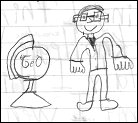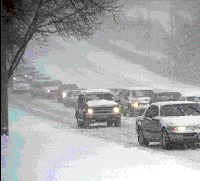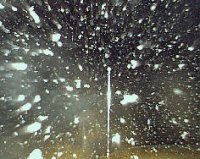|
4th Grade Writing A Snow Day It's a time for sledding, it's a time for games, It's a time for jumping in the snow and getting covered in some, It's a time for a snowball fight and having lots of fun, My Old, Old Man When I see my Geo Safari Talking Globe Jr., I think of my Grandpa Gene. When I see its round shape spinning, I think of his big round body. When I hear it talking, I think of all his knowledge. 
When I see Italy, I think of the time I went to an Italian restaurant, and I had a great time with him. When I see India, I think of all the geography games we played that night. When I see its beautiful bold colors, I think of my hero, Grandpa Gene. Big Bad Blizzards 
I bet most of you think you know what blizzards are. Big snow storms, right? Well, that's pretty good, but it doesn't actually matter how much snow is falling for a storm to be a blizzard. The determination of a true blizzard is how much the wind is blowing and how far you can see through the snow. When there are blizzard conditions, the winds must be at least 35 mph or even faster and you can't see very far at all. You can't even see as far as a quarter of a mile. That's about from the school to Longview Drive. And most blizzards are usually below 20°F. So the difference between a blizzard and an ordinary snow storm is that a blizzard blows snow and in a snow storm the snow falls to the ground. Snow storms can be fun. Blizzards can be disastrous. 
Blizzard of 1978: February 5-7
The things that happened in the Blizzard of 1978 are pretty bad to hear about, but they were even worse to live through. Sources: Weather.com (The Weather Channel's Website), United States Search and Rescue Task Force, Columbia Electronic Encyclopedia, and the University Corporation for Atmospheric Research. All writing edited only for spelling and punctuation by Greg's Dad.
|